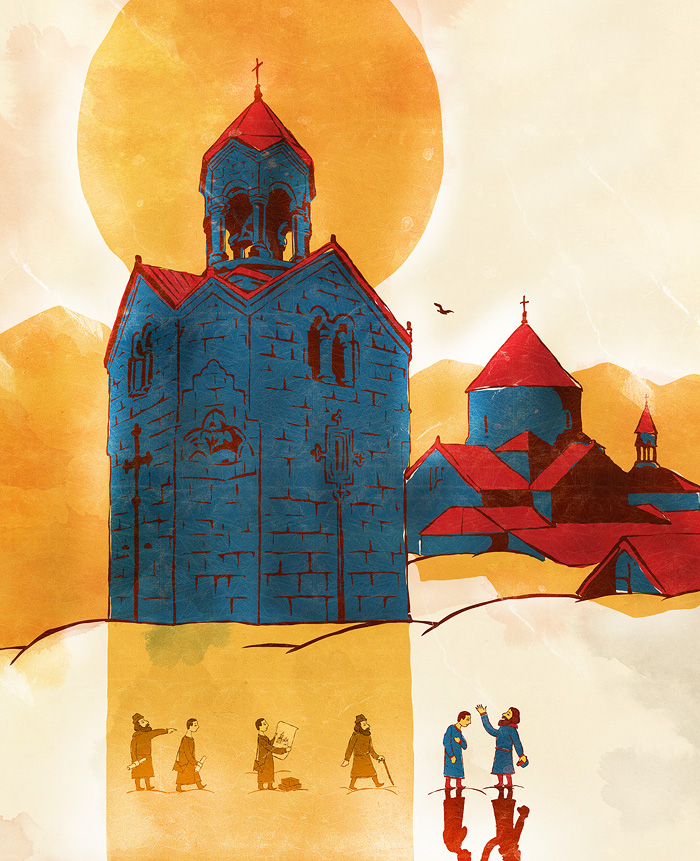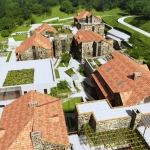It is said that once upon a time a lord orders a master to build a monastery. The master and his son come to Sanahin and begin working. One day the father and son have a dispute. The son discomposedly leaves the building and goes away. After some time another lord orders the master’s son to build a monastery. Day by day son builds the walls of the monastery which become higher and higher. The master learns the news. One day he approaches to the unfinished walls of the monastery, watches them attentively, and then exclaims: “This is a really solid wall (hagh pat, solid wall)”. Then the master takes his son in his arms and they conciliate. Since those days the monastery is called Haghpat.
This is the tradition of how Haghpat was built, Haghpat – the spiritual and cultural prominent center of medieval Armenia, which was included in the UNESCO world heritage list in 2000. Haghpat monastery is situated in the North of Armenia, in the bosom of marvelous nature surrounded by rows of wooded mountains. The monastery was built on during the 10-13th centuries. It was established during the rule of Bagratunyats dynasty and was completed by the sponsorship of Zaqaryan lords. Haghpat monastery is a unique complex of secular structures. The parts of monastic complex are churches St. Nshan, St. Grigor, St. Astvatsatsin, porches, tomb-aisle, Hamazasp’s chapel, refectory, shrines, belfry and numerous khachkars (cross stones). Each of these structures is built on the principles and best traditions of Armenian architecture. With their strict symmetry, graceful forms and mysterious appearance they bring the breath of middle ages from the depth of centuries.
The earliest structure of the complex is the church St. Nshan (976-991). It was built on the order of Bagratunyats queen Khosrovanuysh, the wife of king Ashot III Merciful to welfare of their two sons Smbat and Gurgen. The high-relief with their images, holding the church model in their hands, can be seen under the eastern cornice. Hamazasp’s chapel (1257) had an important role in the complex. It is the biggest among the four-pillar porches and the only one built separate from the church as the porches were usually adjoined in the western side of the church. Adjacent to the church St. Nshan one of the unique khachkars is placed – khachkar Amenaprkich (Savior, 1273), the central part of which is occupied by the image of crucified Christ. The ornament of the complex is the belfry (1245). This building with cross-shaped plan in the first floor and the octagon plan in the second floor is crowned by arched tower where the bells had been ringing for centuries and calling thousands of pilgrims to the monastery.













2 thoughts on “Spiritual Center of Medieval Armenia: Haghpat monastery”